The project of a kindergarten that we are going to cover in this article
won the first prize in the contest for "the best design project of a
pre-school educational institution of variative shapes", organized by the
Research Institute for the Development of Professional Education and with the
support of Moscow department of education. The winner was to be awarded, among
other things, with an opportunity to make a presentation at a conference
dedicated to innovative design of kindergartens. The conference took place on the
15th of February at the Information and
The architects got the commission of designing the kindergarten that is
situated amidst residential buildings on the 2nd
Strictly speaking, what was required of "Atrium" was just to
"finish" the facades and the interiors - but the architects thought
it below them to approach the task formally and worked their way through
everything, including the technical plan. What was ultimately left of the
original project was the set of dimensions, even though the architects had to
coordinate the numerous changes not with the investor ("Donstroy")
but with a "less personified commissioner", this last being the
representatives of the district authorities - due to the fact that the
kindergarten has the municipal status and number. In a word, in spite of the
time constraints, the minimum budget (the construction period coincided exactly
with the lowest point of the economic crisis) and the difficulties connected
with getting all the necessary approvals, the architects were ultimately able
to make a difference - now the building looked undoubtedly "Atrium"
style.
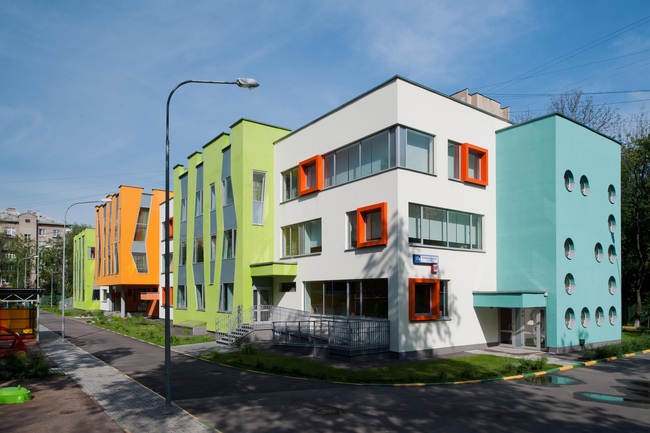
Kindergarten at the 2nd Parkovaya Street
Working with the volume that was generally defined by the existing plan,
the architects used to the best effect its outstanding blocks, the alternating
of which prompted the central theme of the project - the theme of playing
games. Each fragment of the building can be viewed as part of an exciting game
of blocks, the game elements being there in the structure of the building as
well as in the details. This impression is enhanced at the expense of the fact
that the cubical blocks are placed with a shift to one another, as if put there
by a child's unsteady hand.
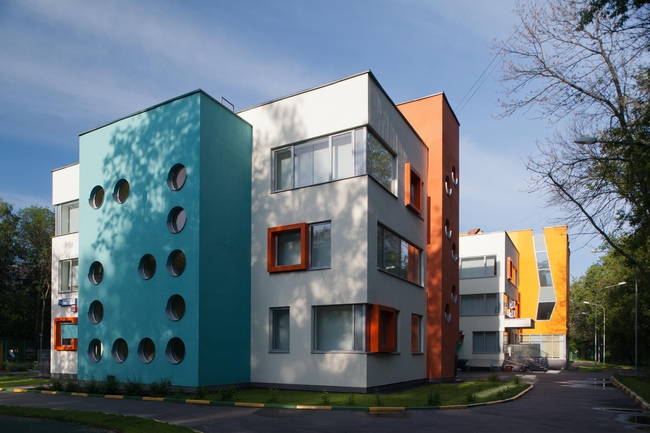
Kindergarten at the 2nd Parkovaya Street
At the same time the structure of the building is easily discernible -
from a white rectangle, multicolored volumes protrude: the turquoise and red
ones with bull's eye windows are staircases, the chartreuse and the orange
ones, pierced with zigzagged verticals of "mystery forest" are the
volumes of the auditorium, the gym, and the large swimming pool on the first
floor. Behind the white walls, there are children's bedrooms and game rooms but
these do not fall short of their neighbors - here and there, like curious
children, square red frames pop out of them. Thus the architects implement one
of their favorite principles: they designate the functions of the premises on
the facade, building the house in accordance with the fundamentals of classic
modernism - from inside to outside. And, as a side effect of such decorative
functionalism, they are getting a multicolored and height-varying "fairy
tale country" with its towers of staircases, and its magic forest that is
drawn on the facades and that grows over the roof with the teeth of the parapet
that look like the pinions of the Kremlin wall on a child's watercolor drawing.
The play of the volumes, the colors, and the heights... Everything is reasoned
and everything is cheerful-looking.
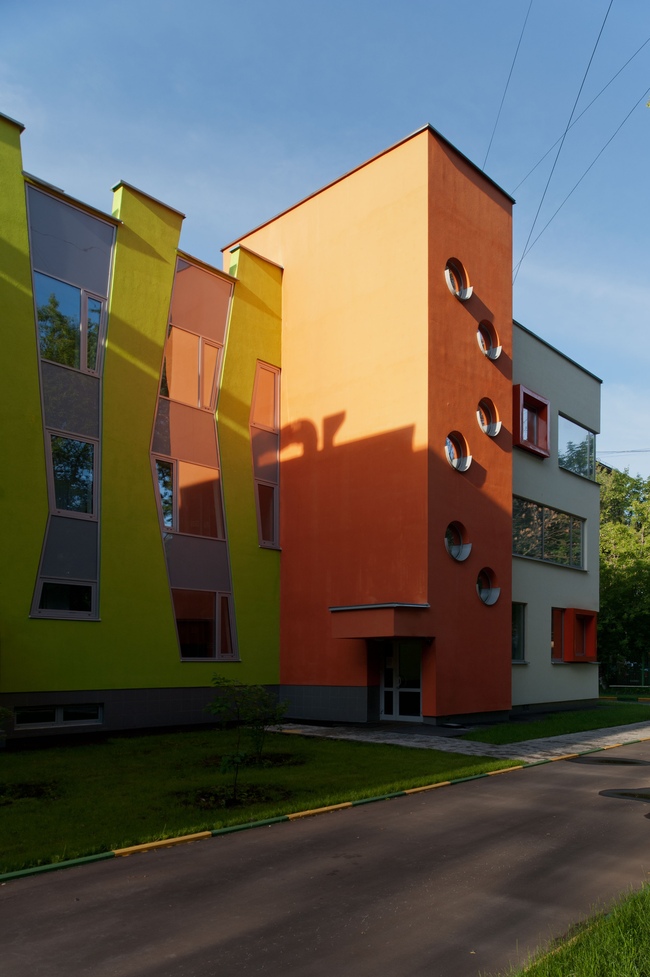
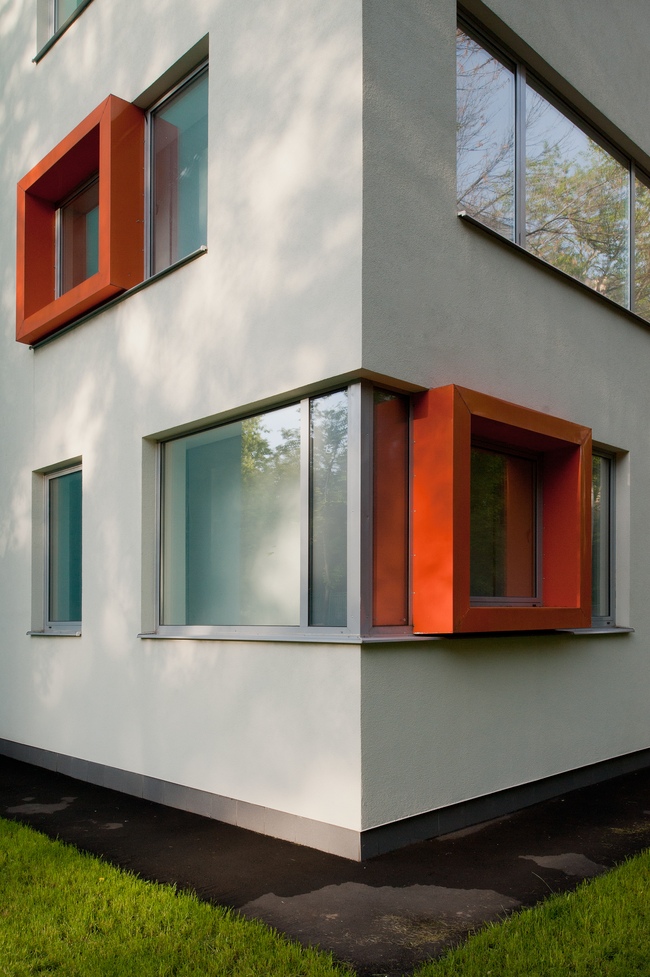
Kindergarten at the 2nd Parkovaya Street
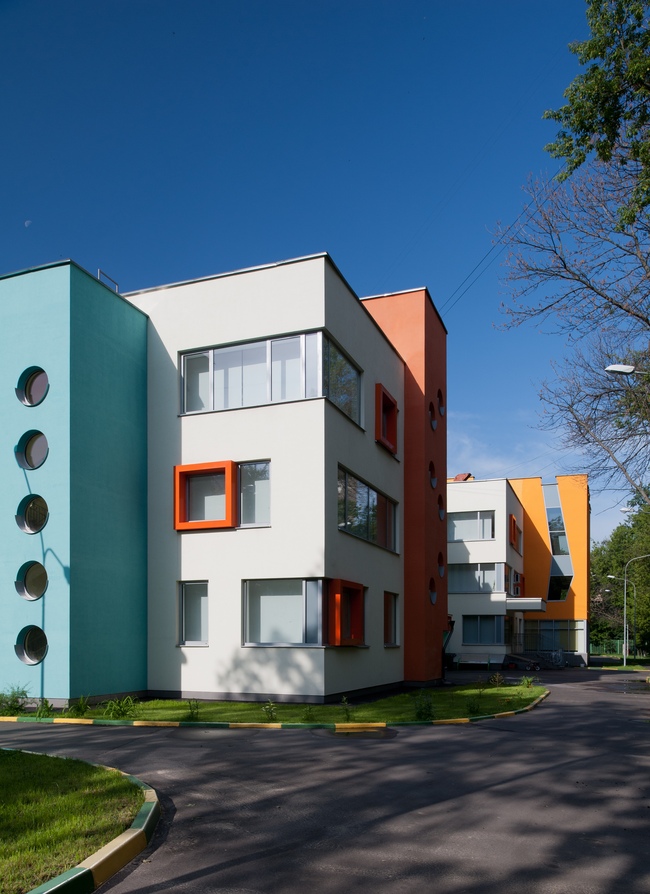
The main image centerpiece of the project was to be formed of the
mystery "crayoned forest". Initially it was also planned to make
these zigzags three-dimensional, casting a complex form of fiber concrete - it
was at that time that "Donstroy" launched a production line of its
own for molding fiber concrete panels. "The original idea was to make all
the surfaces not only multicolored but of different textures as well, make them
from different materials. The commissioner, however, opted out of using the
fiber concrete and it all ultimately came down to the good old stucco. It was
only the configuration of the windows and the colors that survived" - Vera
Butko shares.
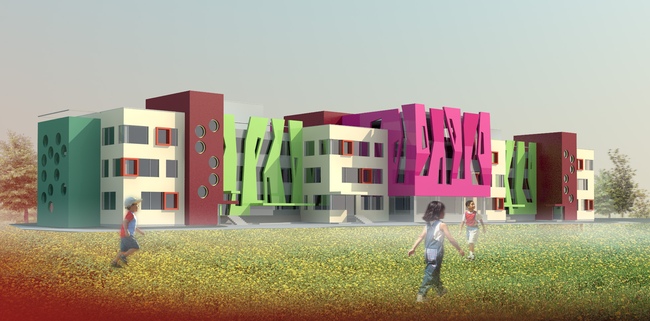
Kindergarten at the 2nd Parkovaya Street. Design offer.
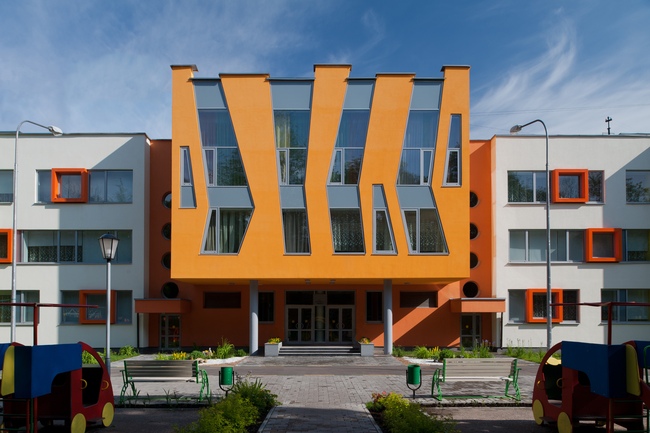
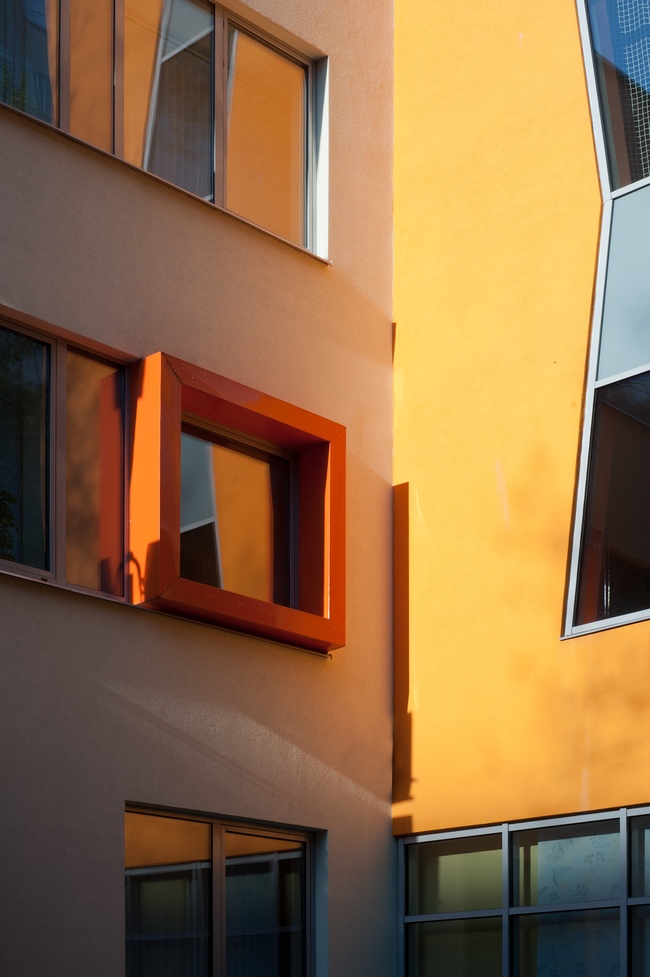
Kindergarten at the 2nd Parkovaya Street
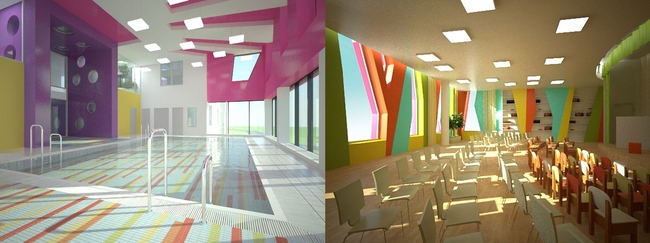
Kindergarten at the 2nd Parkovaya Street. Interior design.
The interiors became the biggest disappointment of the project. The
"Atrium" architects worked them down to the last nail, so as every
detail would be in its place. However, the never did get access to the author
supervision, different people were responsible for the procurement of the
materials and furniture, and as a result nothing went to plan. In the project
the interiors are drawn as the direct continuation of the facades. They have in
them the same round windows and tree-like zigzags on the walls of the
auditorium. The original idea was "what you see is what you get" - if
you have a "forest" on the outside, you will have a
"forest" inside, only better and more colorful. Either the facades
were "growing" into the interior or the color was "growing"
from the inside out, spilling over onto the walls.
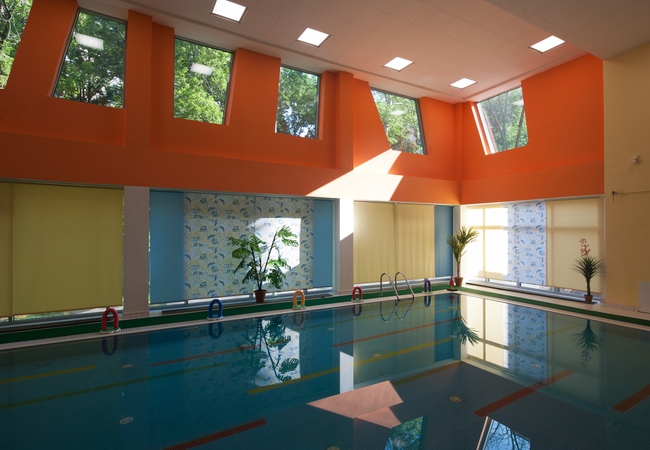
Kindergarten at the 2nd Parkovaya Street: swimming pool
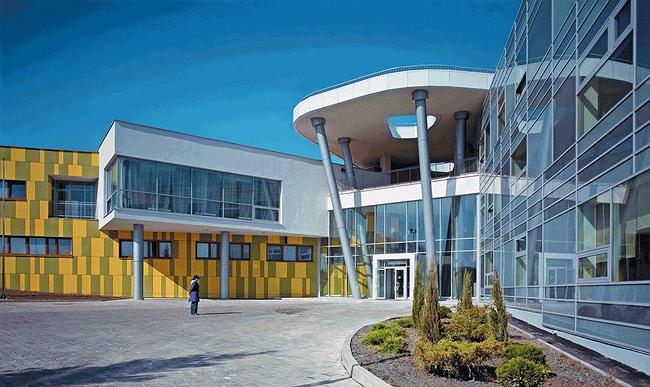
Kozhukhovo Orphanage
Color per se plays a very special part in this project. The bright and
cheerful palette unmistakably defines the function of the building. "We
fought to protect our color solution for quite a while, - the architects share
- we kept getting reproaches and warnings that ostensibly because of the
brightness of color the children will grow psychically unbalanced. Funny that
we kept getting these accusations from the construction workers themselves, and
not from teachers or children psychologists". Shortly after the completion
of the construction (in October last year) there were reports that Moscow's
mayor Sergey Sobyanin praised the building during one of his inspection visits
over the North-West Administrative District: "a great project... positive
both from the construction and architectural standpoint" - said the mayor
and even recommended its "repeated usage".
The bureau's portfolio includes several school buildings, including the
orphanage in Kozhukhovo area, a sunny-yellow building of a sophisticated
"whirling" shape. After that, just as the Kuzhukhovo orphanage, also
at Donstroy's commission, the architects designed an educational complex in the
district of Schukino, consisting of a junior school and two kindergartens.
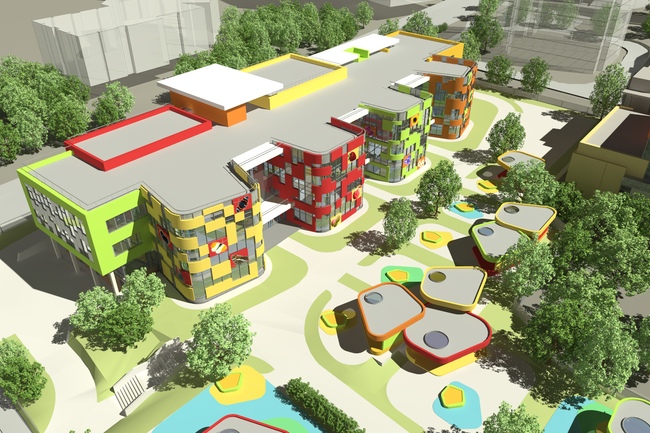
Kindergartens at Schukino district. Elevation facing yard
One can notice the similarity between the Kozhukhovo orphanage and the
Schukino educational complex: for example, in the first case the slanting
"wisps" of silver-colored pillars supported the perforated
"pancake" of the main awning that united, like a joint, the entire
building, while in the second case this motif is transferred onto the
"mushroom" awnings of the children's playgrounds.
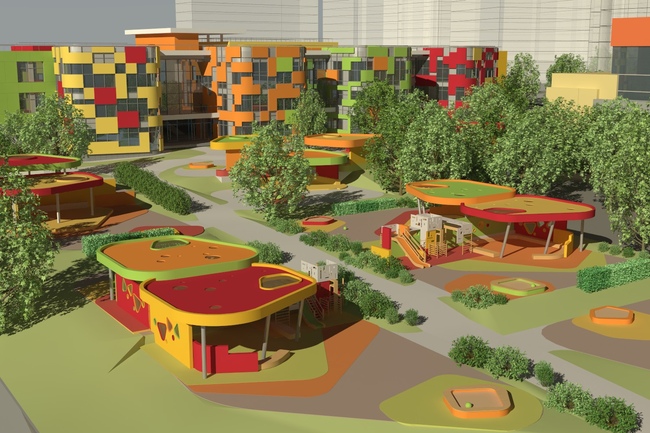
Kindergartens at Schukino district. Yard
Out of the rectangular body of the buildings and into the yard, there
grow four rounded "fingers" of the group blocks with
"webbings" of deep recessed balconies between them. The color is
active, the drawing is asymmetric and it sometimes looks like an arrested game
of tetris or maybe like a multitude of chaotic large pixels on the television
screen.
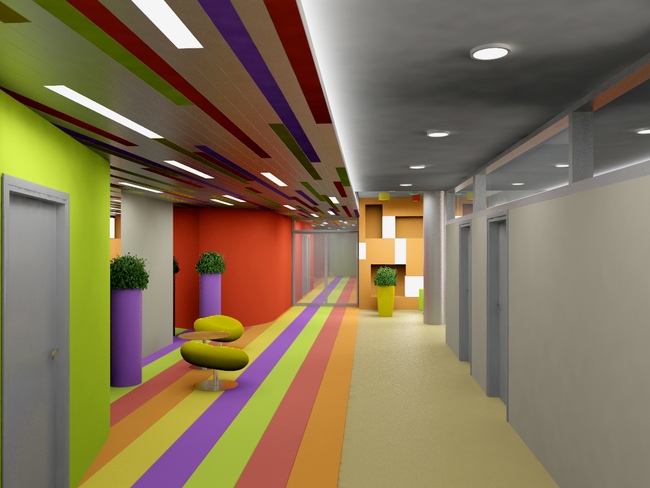
Kindergartens at Schukino district. Interiors
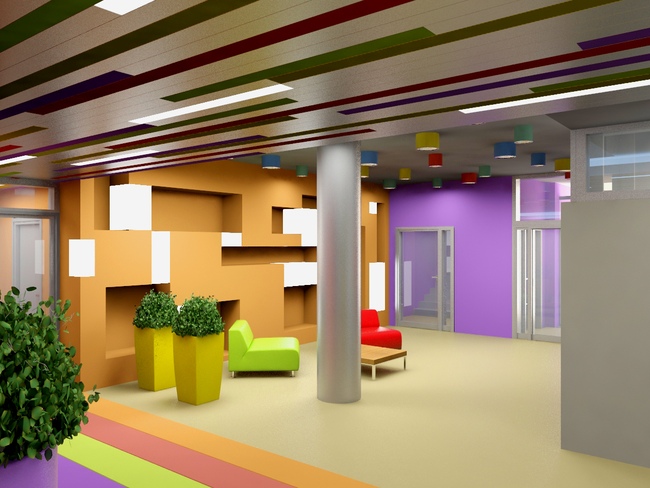
Kindergartens at Schukino district. Interiors
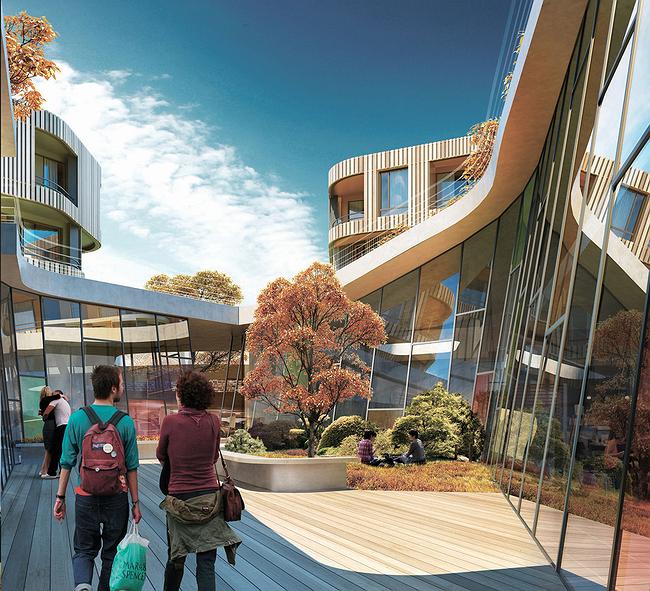
Lower level of the yard
In a word, the theme of schools and kindergartens has become one of the
favorites with Vera Butko and Anton Nadtochy. So it is not surprising that in
the contest for designing the residential blocks in Skolkovo's Technopark
(District D2) they got a block with a kindergarten in it - in that particular
case it was designed by the European standards and under a lot of space
constraints, and was thus called "children's club", but the colorful
beams from this building that was literally inserted inside a hill lightened up
the entire block with its playful flares of rainbow colors, breaking through
the multicolored glass of the "light funnel" in the center.
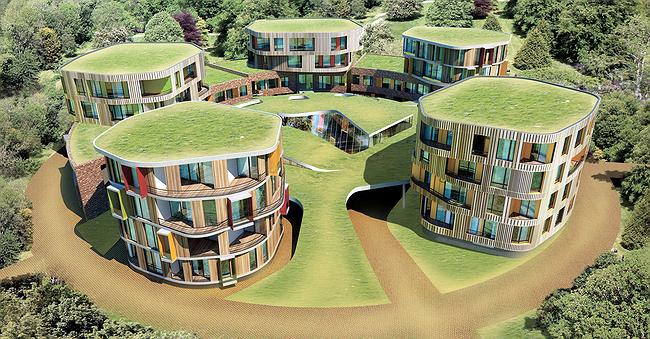
Overview of the block
One should mention here that multicolored schools and kindergartens have
become quite common of late - now even
So what makes the projects by Vera Butko and Anton Nadtochy so
different? I would say that it is some plastic and even theme
"abundance" that is there about them. Their color is inseparable from
their shape, it grows into it, and then both shape and color grow into the
interior. Or, conversely, it grows from the interior onto the facades. The
building strives to become a living being, not just another set of
"lively" colors that are so numerous around but a house that pays it
for real, according to the serious rules of the game. One can always feel it
when the grown-ups really had no time to really put their mind to it: they have
construction rules and laws to obey, meetings to attend, and phone calls to
answer - but the children just want to play games! And the grown-ups make
believe that they are playing a game, talking at the same time to their boss or
their client on the phone, thinking that they could get away with some sort of
palliative.
Vera Butko and Anton Nadtochy play it for real and they don't make
believe. And this is precisely why they come up with all of their crazy ideas -
and this is really important. Because if you have but one technique or idea,
losing it in the construction process is lethal. But if you have many ideas -
no, your losses do not become less painful - but here is what ends up
happening: the building stays true to itself and keeps its face (and faith!) no
matter what. Because it has something that it can give up - like a lizard loses
its tail - keeping in mind that perhaps next time you will be able to implement
more. Maybe,
a lot more.





















































